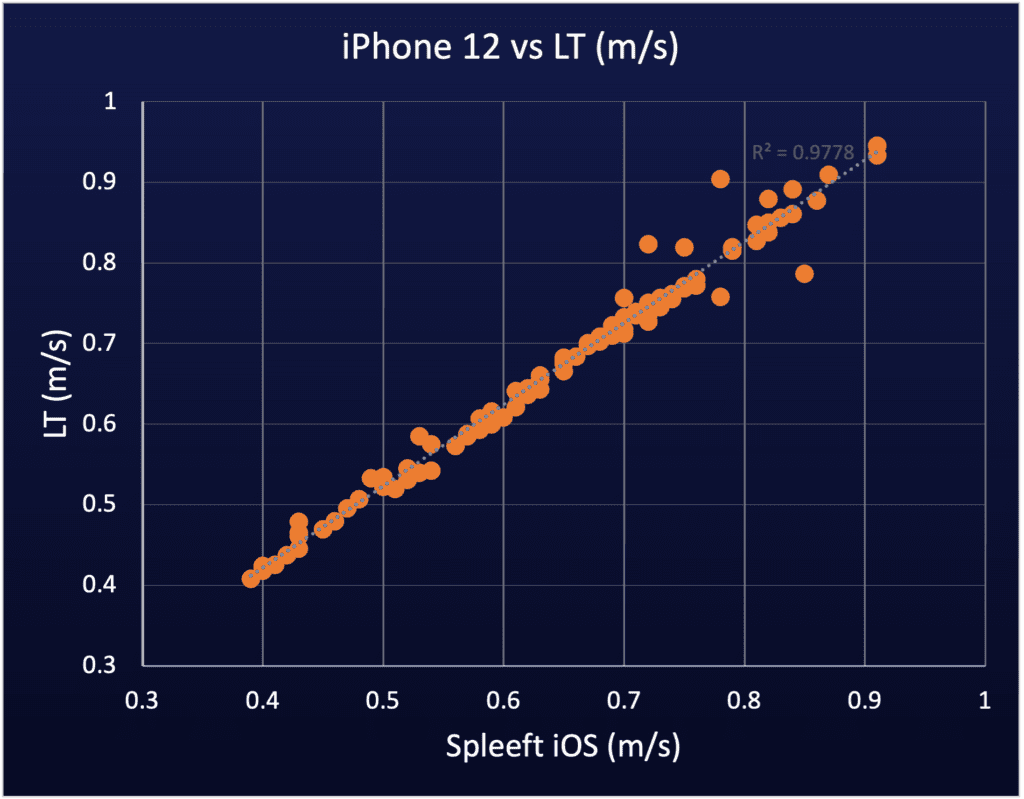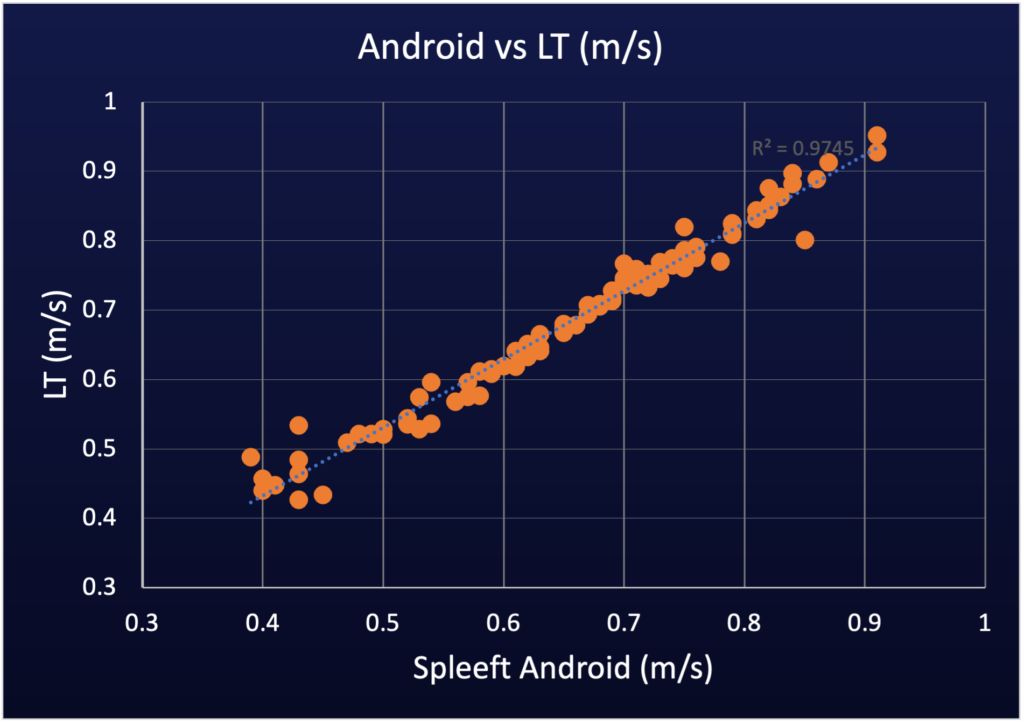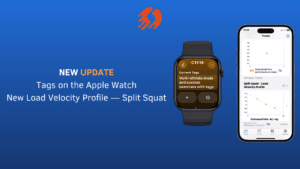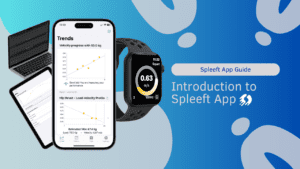INTRODUCTION – Scientific Validity
After validating and testing with real users the measurement of running speed with the mobile camera (you can read the presentation here and the validation here), we realized that reliability was not everything when developing technology for athletes. The scientific validity and reliability of Computer Vision to track barbell velocity is incredible, even on very low-cost Android devices. However, its usability left a lot to be desired: the impossibility to accurately measure range of motion (ROM) and the fact that it was necessary to place the mobile with a tripod in front of it (something difficult in a gym because of the space or the other users passing around, which even some athletes might find embarrassing) made it not very useful for the day-to-day athlete, which is what Spleeft is designed for.
For this reason, always with the aim of offering our users a tool capable of being used daily to monitor strength training, we decided to change to a technology that is well established in the sector: accelerometers or IMUs (Inertial Measurement Unit). This technology, despite the fact that the scientific literature presents a disparity of evidence as to its validity and reliability (1,2) is widely used in practice by professionals due to its ease of use, despite the disparity in the scientific literature regarding its validity and reliability, due to differences in the algorithms used.
The aim of this article is, once again, to show you comparative data of Spleeft, both on iOS and Android, against a linear transducer, demonstrating its validity and reliability. We will introduce you to the protocol so that, if you want to increase your confidence in the tool, you can replicate it.
In case you don’t want to read the more technical introduction and results, we can tell you that once again we consider Spleeft to be a valid and reliable tool to be used on a daily basis as an athlete, since we obtained a high correlation (r2>0.97) and there were no significant differences in the results (p > 0.05) between all the platforms and the linear transducer.
METHOD
One subject performed 94 back-squats (taking advantage of the stretching-shortening cycle) with a constant low weight of 25 kg, varying the intentionality to perform lifts with a velocity between 0.39-0.91 m/s.
The Spleeft app was installed on a low-cost Android (v1.4.1) Xiaomi Redmi Note 6 Pro with Android 9, an Apple iPhone 7 (v1.3) with iOS 15.0 and an Apple iPhone 12 (v1.3) with iOS 15.0. It should be noted that each device has different quality sensors and therefore the technical specifications are not exactly the same. However, Spleeft processes a 100 Hz signal from each sensor (accelerometer, gyroscope and magnetometer). A scientifically validated LT was used as gold standard (1).
RESULTS
Concurrent validity of the application
A very high correlation was obtained in the average speed values measured with Spleeft and LT, both on iPhone 12 (r2=0.98, SEE=0.014 m/s, average error = 0.027 m/s), iPhone 7 (r2=0.98, SEE=0.014 m/s, average error = 0.019 m/s), and Android (r2=0.97, SEE=0.014 m/s, average error = 0.046 m/s).
For ROM measurements, correlation values were high on both the iPhone 12 (r2=0.93, SEE= 0.3 cm, average error = 3.15 cm) and iPhone 7 (r2=0.92, SEE=0.3 cm, average error = 0.9 cm), while on the Android device the validity was acceptably lower (r2=0.83, SEE=0.36 cm, average error = 5.5 cm),


Reliability and accuracy of the track barbell velocity with the app vs LT
The paired samples t-test showed that there are no significant differences between the app on any of the devices and the LT (p>0.05) for both speed and ROM measurements, except on Android for the ROM measurement (p<0.05).
The Bland-Altman plots did not reveal the presence of any systematic error, as the correlation between the mean and difference of the speed measurements and the LT were very low (r2 = 0.0004 on Android, r2 = 0.1 on iPhone 7 and r2 = 0.08 on iPhone 12). Therefore, the errors for each device are constant throughout the entire load-velocity curve.
Bland-Altman plots are made between the difference of two results to be compared and their mean. A high r2 correlation (>0.9) indicates the existence of a systematic error.
Intra-observers reliability
The intraclass correlation coefficient (ICC) revealed high agreement between the three observers: Spleeft for both iPhone 12 and Android and the LT (ICC=0.964, CI [95%]=0.933-0.979) in the average speed measurement. No significant differences were found between Spleeft in its Android version and its iOS version (p>0.05). The Bland- Altman plot confirmed the above results (r2=0.005).
For Apple devices, the ICC again showed high agreement between Spleeft on iPhone 12 and iPhone 7 and the LT (ICC=0.991, CI [95%]=0.968-0.996) on the mean speed measurement. No significant differences were found between measurements made with both devices (p>0.05). The Bland-Altman plot confirmed the above results (r2=0.01).
CONCLUSIONS
The validity and reliability of Spleeft, using your smartphone as IMU, on both platforms and devices for measuring back squat execution speed in an eccentric-concentric contraction regime on a guided machine was demonstrated, matching the results of the preliminary comparative camera measurements (article here). Once again, it has been demonstrated that low-end mobile phones can compete against the top of the range.
These results are surprising, as other validation studies of IMUs do not consider them valid or reliable (1) of IMUs do not consider them to be valid or reliable as they find a low ICC (ICC < 0.78) and systematic errors in the Bland – Altman plots (r2 = 0.23 – 0.42) of 0.05 ± 0.21 m/s. However, there are other IMUs that have been considered valid and reliable by the scientific community. (2). This difference in results does not indicate a lack of congruence in the scientific literature as to whether or not IMUs are reliable for measuring execution speed, but rather that the validity and reliability itself does not depend exclusively on the technology and its hardware. These factors may be related, apart from the methodological ones when collecting data, to the software and algorithms that each IMU uses to filter the signal, eliminate possible noise, determine the start and end time of a repetition…
Therefore, the data presented above demonstrates that Spleeft’s algorithm is valid for filtering the signal from the sensors of each mobile phone and provides a reliable and low-cost measurement of execution speed.
As future lines of innovation and research, based on the data presented, it is necessary to improve the measurement of ROM, as it presents deficiencies as it is doubly indirect, as well as being tested with more standardised protocols (such as the 1RM test) in different exercises and with other contraction regimes.
Finally, going back to what was stated in the introduction of this article, measuring running speed is not everything if you don’t use the data to improve your training. That’s why Spleeft also includes features for self-regulating training using Z-Score and monitoring the fastest repetition over the long term, so now that you have a tool that is accurate enough and easy enough for your athletes to use, you can start integrating that data into your decision making in a simple way.





